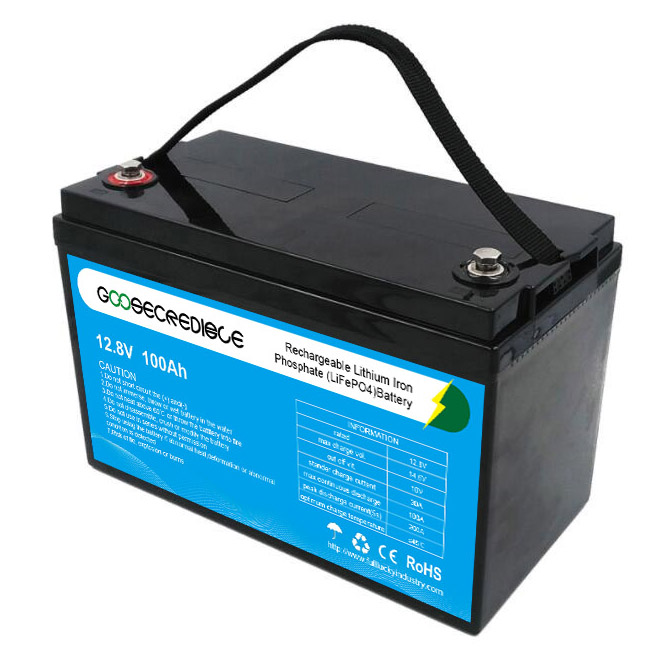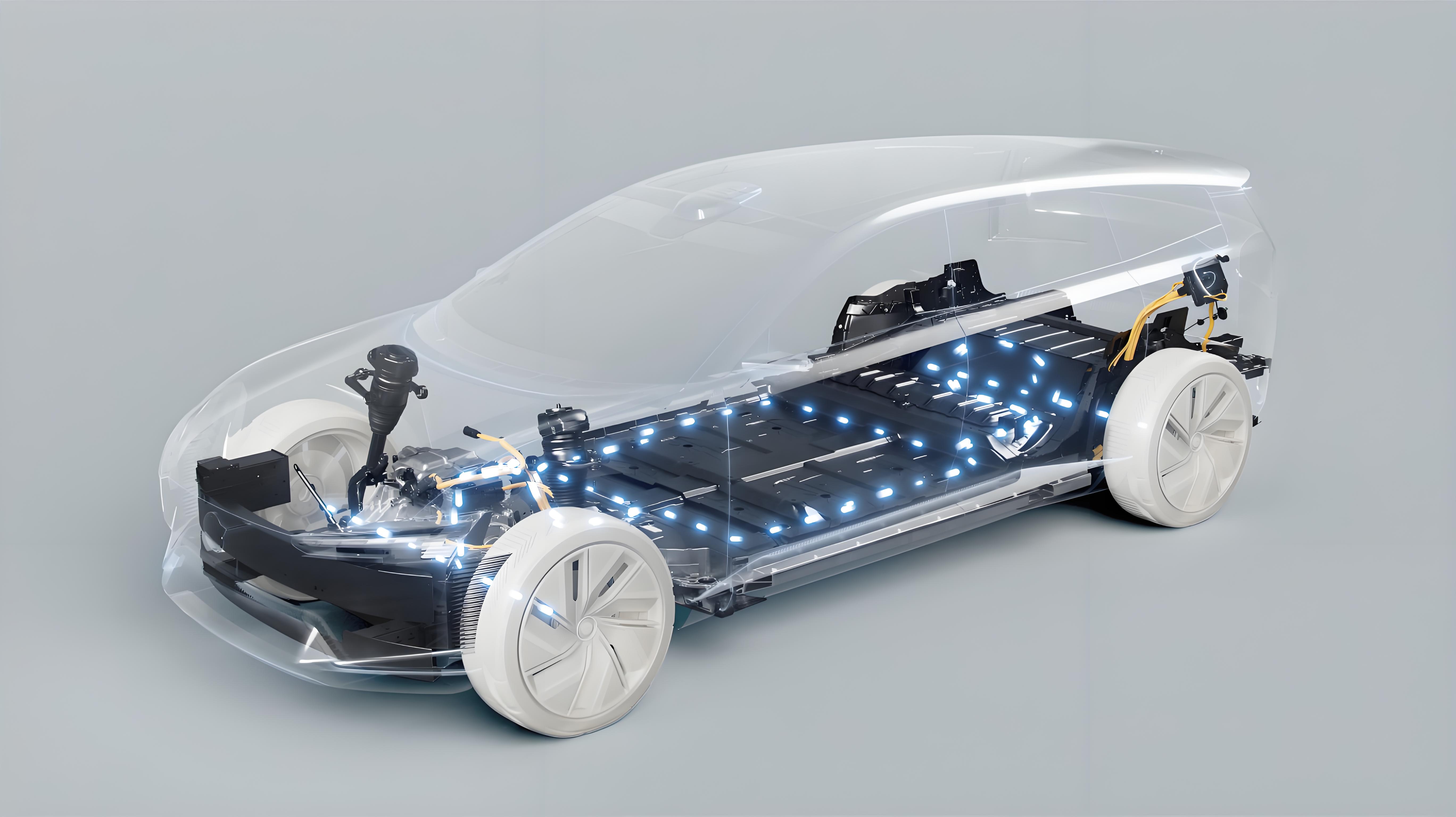Understanding the Lifespan and Performance of LiFePO4 Rechargeable Batteries
LiFePO4 rechargeable batteries have been growing in popularity for a variety of applications, particularly in electronic devices and transportation. Understanding the lifespan and performance of LiFePO4 batteries is crucial for making an informed decision on whether they are the right choice for your needs.
LiFePO4 batteries have a longer lifespan compared to other rechargeable batteries, such as lithium-ion batteries, due to their superior chemistry. They can last up to 10 years with regular use and proper maintenance, which makes them a reliable choice for long-term use. In addition, LiFePO4 batteries have a higher discharge rate, which allows them to handle high currents without damage, making them ideal for high-drain devices like power tools.
Another benefit of LiFePO4 batteries is their safety. They are less prone to overheating and fires compared to other lithium-based batteries, such as lithium-ion or lithium-polymer batteries. This is due to their stable chemistry, which makes them less likely to experience thermal runaway or other safety hazards.
In terms of performance, LiFePO4 batteries are known for their high energy density, meaning they can store more energy in a smaller space compared to other battery types. This makes them an ideal choice for devices that require long battery life but have limited space for a battery, such as smartphones, laptops, and other portable electronics.
LiFePO4 batteries also perform well in extreme temperatures, making them suitable for use in a variety of environments. They can operate at temperatures as low as -20°C and as high as 60°C, which makes them a reliable choice for outdoor and industrial applications.
Lastly, LiFePO4 batteries are an environmentally friendly option. They do not contain heavy metals, such as lead or cadmium, which can be harmful to the environment. Additionally, they are recyclable, which reduces the amount of electronic waste generated by the use of disposable batteries.
Overall, LiFePO4 rechargeable batteries offer numerous advantages over other rechargeable batteries in terms of lifespan, safety, performance, versatility, and environmental friendliness. Understanding these benefits can help you make an informed decision on whether they are the right choice for your needs.
Time: 2024-8-24
Today, as the electric vehicle industry is booming, lithium-ion automotive batteries play an important role as the core power source. This article will provide an in-depth analysis of the technical composition, performance characteristics, and current market conditions of lithium-ion automotive batteries, but will not cover specific application areas, innovative technologies, and future prospects. Technical Composition Lithium-ion automotive batteries are mainly composed of cells, modules, battery packs and battery management systems (BMS). As the basic unit of the battery, the cell consists of a positive electrode, a negative electrode and a non-aqueous liquid electrolyte. The positive electrode materials mainly include lithium iron phosphate (LFP), lithium nickel cobalt manganese oxide (NCM) and its derivatives such as lithium nickel cobalt aluminum oxide (NCA), etc. Each material has its own advantages and disadvantages in terms of safety, energy density and cost. The negative electrode is usually made of graphite material, which forms an irreversible SEI film during the first charge and discharge, resulting in partial capacity loss. Performance Characteristics Lithium-ion batteries have been widely used in electric vehicles because of their unique performance advantages. First, lithium-ion batteries have a high energy density and can store a large amount of electrical energy in a relatively small volume and weight, which is critical to improving the range of electric vehicles. Second, lithium-ion batteries have a long cycle life and can withstand multiple charge/discharge cycles without significant attenuation, which helps reduce the long-term cost of ownership of electric vehicles. In addition, lithium-ion batteries also have the advantages...
Time: 2023-7-12
A sulfated battery, also known as a sulfation battery, is a type of lead-acid battery that has experienced a build-up of lead sulfate crystals on its electrodes. This condition, known as sulfation, occurs when the battery is left in a discharged state for an extended period or is subjected to continuous undercharging. Lead-acid batteries are widely used in various applications, including vehicles, boats, and backup power systems, due to their high energy density and low cost. These batteries consist of lead plates immersed in an electrolyte solution of sulfuric acid. During the charging process, the lead sulfate converts back into lead and sulfuric acid, replenishing the battery's energy capacity. However, if a lead-acid battery remains in a discharged state, the lead sulfate crystals may not convert back into lead and sulfuric acid. Instead, they form a layer on the surface of the electrodes, reducing the available surface area for the electrochemical reactions to occur. This sulfation process gradually reduces the battery's ability to hold a charge and deliver power. Sulfation is a common occurrence in lead-acid batteries and can be caused by various factors. One of the primary reasons is leaving the battery discharged for an extended period. If a battery is not used or recharged regularly, the lead sulfate crystals will continue to accumulate and harden over time. Additionally, continuous undercharging, where the battery is not fully charged during each cycle, can also lead to sulfation. The effects of sulfation on battery performance can be...
Time: 2023-7-12
Electric bikes and scooters have gained popularity as an eco-friendly and affordable mode of transportation. They offer a convenient way to navigate through traffic and reduce carbon emissions. However, the key component that makes these vehicles run efficiently is the battery. In this article, we will explore the importance of a high-quality ebike/scooter battery and how it powers your ride with efficiency. First and foremost, let's understand the basic functioning of an ebike/scooter battery. These vehicles are powered by rechargeable lithium-ion batteries. Lithium-ion batteries are preferred due to their high energy density and long cycle life. These batteries store electrical energy, which is then converted into mechanical energy to propel the vehicle forward. Efficiency is crucial when it comes to electric vehicles. An efficient battery ensures longer rides and reduces the need for frequent recharging. It also maximizes the vehicle's range and performance. The efficiency of a battery is determined by various factors, including its capacity, voltage, and overall design. Capacity refers to the amount of electrical energy a battery can store. The higher the capacity, the more distance an ebike/scooter can cover on a single charge. It is essential to consider your travel needs when choosing a battery with the appropriate capacity. A battery with a higher capacity will allow for longer rides without the need for recharging, offering convenience and flexibility. Voltage is another critical factor that affects a battery's efficiency. Voltage determines the power output of the battery and ultimately influences the vehicle's...
Time: 2023-11-17
Off-roading enthusiasts are always on the lookout for the next big thing in the world of dirt biking. Over the years, we have seen the introduction of various advancements in technology, from improved suspension systems to more powerful engines. However, one particular innovation that has been gaining traction in recent years is the electric dirt bike with a lithium battery. Traditional dirt bikes have always relied on combustion engines powered by fossil fuels. While these bikes offer a thrilling and adrenaline-fueled experience, they come with a number of downsides. The noise and pollution caused by internal combustion engines have raised concerns about their impact on the environment. Additionally, the constant need for refueling and maintenance can be a hassle for riders. Enter the electric dirt bike with a lithium battery, a game-changer in the world of off-roading. These bikes are powered by rechargeable lithium-ion batteries, which provide a number of distinct advantages over their traditional counterparts. One of the major benefits of the lithium battery is its weight. Lithium-ion batteries are significantly lighter than the lead-acid batteries used in traditional dirt bikes. This reduction in weight allows for a more agile and nimble ride, making it easier for riders to navigate challenging terrains. The lighter battery also contributes to improved overall performance, allowing riders to achieve higher speeds and better acceleration. Another advantage of the lithium battery is its durability and longevity. Unlike lead-acid batteries, which tend to degrade over time and require frequent replacement, lithium-ion...
Time: 2023-8-1
Golf carts have become a popular mode of transportation in many communities, especially in retirement communities and golf resorts. These electric vehicles provide a convenient and eco-friendly way to get around. However, maintaining the batteries in your golf cart is crucial to ensure optimal performance and prolong their lifespan. In this ultimate guide to golf cart battery maintenance, we will explore the essential steps to keep your batteries in top condition. 1. Charging Proper charging is the foundation of good battery maintenance. It is crucial to charge your golf cart batteries regularly and fully. Avoid partial charging, as it can lead to sulfation, a condition where sulfur crystals form on the battery plates and reduce their capacity. It is recommended to charge your batteries after every use, even if you only used the cart for a short distance. 2. Charging Cycles A charging cycle refers to the process of discharging the battery and then recharging it fully. To maintain healthy batteries, it is important to complete a full charging cycle regularly. This process helps to prevent the buildup of sulfate crystals and keeps the battery plates clean. Aim to complete at least one full charging cycle per month. 3. Watering Most golf cart batteries are lead-acid batteries, which require regular watering. Check the water levels in your batteries regularly, and top them up with distilled water if necessary. It is important not to overfill the cells, as this can cause the electrolyte to overflow....
Time: 2023-4-22
Keeping your car's starter battery in healthy condition is vital for its performance and longevity. It is important to regularly check the battery's date to ensure that it does not expire and leave you stranded on the road. In this article, we will guide you on how to check the date of your car's starter battery and what to do if it is nearing expiration. The first step in checking your car's starter battery is to locate it under the hood of your car. The battery is typically rectangular in shape and has two cables connected to it. Once you have located the battery, you can proceed to look for the manufacturing date. Most car batteries have a sticker on the top or side that displays important information about the battery, including its manufacturing date. The date is usually in a code that consists of a letter and a number. The letter represents the month of production, and the number represents the year. For example, represents January 2015. It is important to note that some batteries may have the date printed in a different format. If you are having difficulty finding the date, you can refer to your car's owner manual or contact a professional mechanic for assistance. Once you have identified the date of your car's starter battery, you can determine whether it is nearing expiration. The lifespan of a typical car battery is about three to five years, depending on its usage...
Time: 2023-8-31
Effective communication is crucial. Whether it is for personal use or in professional settings, we rely heavily on various electronic devices to stay connected. From smartphones and laptops to wearables and drones, these devices have become an integral part of our daily lives. However, the key to ensuring uninterrupted communication lies in the power source that fuels these gadgets - lithium batteries. Lithium batteries have revolutionized the way we communicate by providing a lightweight, efficient, and long-lasting power solution. Unlike traditional batteries like alkaline or nickel-cadmium, lithium batteries offer several advantages that make them the preferred choice for powering communication equipment. First and foremost, lithium batteries have an incredibly high energy density. This means that they can store a large amount of energy in a compact and lightweight package. As a result, devices powered by lithium batteries are much smaller and lighter, making them more portable and convenient to carry around. This is particularly important for communication equipment like smartphones and tablets, which need to be easily transportable for effective communication on the go. Fithium batteries have a low self-discharge rate, which means they can hold their charge for extended periods without losing significant power. This is a significant advantage over other battery types, as it eliminates the need to constantly recharge or replace batteries. Imagine being in the middle of an important conversation or on a business trip and suddenly running out of battery. With lithium batteries, such scenarios become a thing of the past, as...
Time: 2023-6-13
Lithium batteries have become increasingly popular in recent years due to their high energy density, long life span, and low self-discharge rate. They are commonly used in various electronic devices, such as smartphones, laptops, and electric vehicles. However, in some cases, a single lithium battery may not provide enough voltage to power a device, and multiple batteries need to be connected in series. Connecting lithium batteries in series is a common practice in the electronics and automotive industries. When two or more batteries are connected in series, the positive terminal of one battery is connected to the negative terminal of the next battery, resulting in a higher total voltage output. For example, two 3.7-volt lithium batteries connected in series will produce a total output of 7.4 volts. However, connecting lithium batteries in series requires careful consideration and attention to safety. Here are some of the basics you should understand before attempting to connect lithium batteries in series. Battery Capacity The capacity of a battery refers to the amount of electrical charge it can store and is measured in ampere-hours (Ah). When lithium batteries are connected in series, their capacities add up, but the voltage remains the same. For example, connecting two 5000mAh batteries in series will result in a total capacity of 10,000mAh, but the voltage will remain the same as the individual batteries (usually 3.7 or 3.8 volts). Voltage As mentioned earlier, connecting lithium batteries in series increases the total voltage output. However,...





















